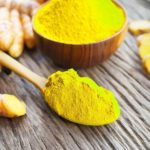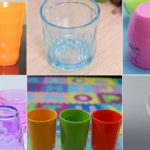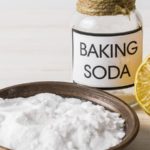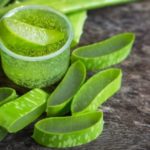1. Turmeric powder
All you need to do is drop a few drops of Hydrochloric HCL into a test tube containing turmeric powder. Then observe, if the solution turns pink, purple or light purple, the turmeric powder is fake.
2. Fake rice
Just one handy tip is to take a bowl of water, put the rice in and soak. Real rice will expand after a while, while fake rice will not float to the surface.

The experience of some rice traders shows that real rice always has a coating on the outside (like bran). When crushing the rice, the coating will peel off and make the water turbid.
Moreover, when squeezing a handful of rice tightly, a lot of rice grains are still sticking to the palm due to the coating. Fake rice, on the other hand, is made of plastic, so water does not adhere to the rice and sticks less on the palm.
3. Coffee
Sprinkle a small amount of coffee powder on the water surface in a glass. Real coffee will float, while fake coffee made from the roots of bitter vegetable will sink to the bottom and leave a streak of color.
4. Milk
Drop a drop of milk on a tilted flat surface. If the milk leaves a white streak, it is a sign of pure milk. But if it doesn’t leave any streak, this milk has been mixed.
If the milk turns yellow when heated and leaves a bitter and soapy taste after drinking, it is certain that fake substances have been mixed in.
5. Chili powder
Real chili powder is a type that cannot dissolve in water. If you put it in water, it will float and not release any color.
However, if you put it in water and see that the chili powder turns into a solution with red or orange color, then it is definitely a type of chili powder that has been mixed and dyed.
According to Khoevadep
Turmeric Powder’>Discover the Benefits of Drinking Turmeric Powder
How to Make Smart Choices When Selecting a Drinking Glass for Better Health
From morning cups of coffee to an afternoon soda, cups are a staple in many people’s lives. But, with the variety of cup materials available—including glass, porcelain, plastic, and paper—it’s important to understand the potential health risks associated with not choosing the correct cup for the job.
Construct Your Own Face Mask: Pore-Minimizing Recipe with Coffee and Aloe Vera Gel
Tips for Keeping in Shape During the EURO Tournament
As the start of the highly anticipated EURO tournament draws near, football fans are ready to enjoy the thrill of watching their favorite teams compete. But while the excitement of watching great matches on TV is boundless, it is imperative to remember to prioritize health and safety during this period. Therefore, keeping a few simple points in mind can help make the celebrations all the more enjoyable.






































